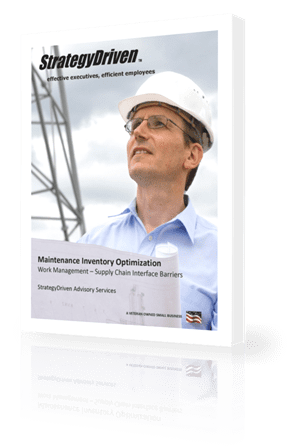3 not-so-obvious reasons to use employee scheduling software in your small business

Turnover rates in the restaurant industry are among the highest in any industry. In 2017 the employee turnover rate in the US restaurant industry edged over 70%. The estimated turnover rate for front-line staff like servers and waiters came in even worse at 110%.
The Center for Hospitality Research at Cornell University estimated the average cost to a restaurant of a turned-over employee is $5864. This works out to employee turnover costing an average full-service restaurant $146,000 every year. In a low margin business like a restaurant this can’t afford to go unchecked.
The cost of employee turnover goes beyond the recruiting, hiring and training of a replacement. This accounts for around 50% of the total cost. The balance is made up of a host of hidden costs that accompany employee turnover that don’t necessarily show up on the balance sheet.
Let’s delve into these hidden costs and what restaurant can do to mitigate them.
Loss of Institutional Knowledge
There’s a famous saying “it takes a village to raise a child,” and this same idea applies to business.
Every time you lose an employee whether it be a waitress, server or cook, you lose important knowledge regardless of whether that employee was working for your business for a year or ten years. When an employee leaves, they take the history and knowledge they accumulated at your company with them as well.
To make matters worse, you need to pay to re-train the replacement employee, and sometimes you can’t teach all the knowledge that was lost. Although it’s difficult to measure the cost of knowledge, you can be assured that time and energy will definitely be wasted with every employee turnover.
Demoralized Staff
It should go without saying that employee turnover strikes at the heart of the morale of your entire workforce.
When an employee leaves, other employees must pick up the slack to account for this void while you search for a replacement. This creates for some unhappy people. Employees can begin to feel resentful if they are taking on more responsibilities with no pay raise or benefits. They might even start considering leaving themselves.
Thus, losing one employee could easily turn into losing a few more throughout the year. It can lead to something like a domino effect where your productivity declines long after the initial employee leaves.
The health of a company is closely tied to the employee turnover rate — so stay keen on keeping your employee morale high if turnovers ever do occur.
Distracted Management
Your assistant manager and shift manager will have to dedicate a good portion of their time to replacing lost employees. These new responsibilities could easily come at the expense of other crucial functions in your company.
Effectively, you will be paying your employees top-dollar salaries for recruiting employees when they could instead be focusing on actual business strategies and expansion. Your business suffers as its primary responsibilities are stalled while your management searches for an employee replacement.
A business usually relies on its best people to recruit new employees. However, with them now busy finding and training new employees, your entire business suffers. The ones with the best business practices and the most know-how in management will distracted looking for an employee replacement. This is always a net drain on your business.
Loss of Credibility
In an environment of excessive employee turnover, management can easily get hit with a serious loss to their credibility.
For example, if any media begins to report on losses to your employee staff, then it could easily cause a snowball effect. Bad publicity over employee turnover and management could easily cause a downward spiral you would be smart to avoid.
A loss of credibility could affect public perceptions of your business, but this could also trickle into a real decline in sales.
For example, if a lost employee affects customer satisfaction, you can begin to see serious consequences: the company will begin to lose its most important customers. With high turnovers, customers could easily get frustrated and begin to turn away from your business.
***
It should be clear now that there are plenty of hidden costs associated with employee turnover, which begs the question: What can you do to stop it?
Create an Inviting and Fulfilling Work Environment
You can lessen demoralization of your staff when an employee leaves by demonstrating that they are a crucial part of your business. This begins with your work environment and how you conduct yourself as a business. Employees will be far less likely to follow suit and leave if they feel they are respected at work. By encouraging a community environment for your staff where they feel welcome, you can retain employees and keep them loyal. Of course, how you choose to go about creating a fulfilling work environment is dependent on the ins and outs of your company. There is no one-size-fits-all solution.
Ask yourself: Would I want to work in this environment as an employee myself? Put yourself in the shoes of your staff and work from there. Make them feel appreciated and let them know they are important to the workings of your business.
Stay Up-to-Date on Compensation and Benefits
A business that stalls on compensating its workers is a recipe for disaster, even if it happens just once. If employees cannot be certain they’ll be paid on time, they’re more likely going to head to the door if such negligence continues.
An efficient business strategy, however, is one that keeps track of how employees are developing and their rising worth, paying them accordingly for better work. This keeps employees satisfied and makes them feel as though they are adding real value to the company (and being rewarded for it!).
Engage Your Employees
You should never siphon off your employees to one section of your business and only interact with them when discussing compensation. Don’t ever limit your employee engagement to just surveys and pay: build a culture of engagement from the top of the company all the way to the bottom.
Everyone needs to be on the same page for a business to be its most successful. If you engage with your employees beyond just what’s absolutely necessary, you’ll be more in tune with the work they’re producing — and your employees will be definitely be appreciative of it.
With these helpful words of advice, you can start limiting the chances of employee turnover and create a vibrant, productive work environment for your business. All of this begins with recognizing your employees as crucial to your business. So, try cultivating a work culture of generosity and gratitude in your own business: you’ll be surprised how far it goes in retaining a productive workforce.













Leave a Reply
Want to join the discussion?Feel free to contribute!